Group Group V ((−)ssRNA) Family Rhabdoviridae Higher classification Vesiculovirus | Order Mononegavirales Genus Vesiculovirus Rank Species | |
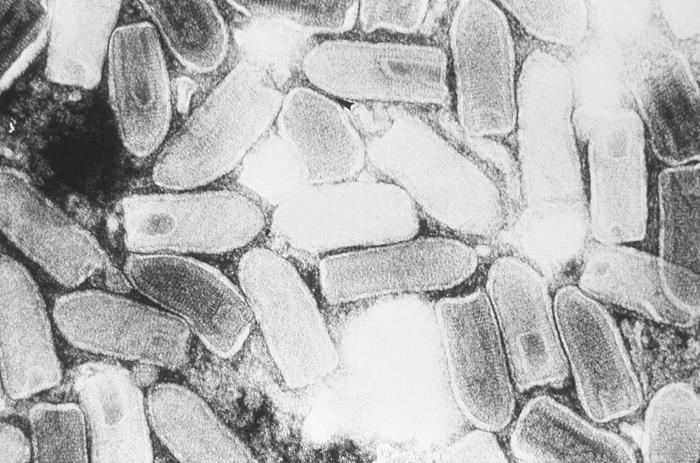 | ||
Scientific name Vesicular stomatitis Indiana virus Similar Rhabdoviridae, Lentivirus, Vaccinia virus, Retrovirus, Murine leukemia virus | ||
Dr christie mayo vesicular stomatitis virus update
Vesicular stomatitis Indiana virus (VSIV; often still referred to as VSV) is a virus in the family Rhabdoviridae; the well-known rabies virus belongs to the same family. VSIV can infect insects, cattle, horses and pigs. It has particular importance to farmers in certain regions of the world where it can infect cattle. This is because its clinical presentation is identical to the very important foot and mouth disease virus.
Contents
- Dr christie mayo vesicular stomatitis virus update
- Properties
- Clinical signs and diagnosis
- Treatment and control
- Oncolytic therapy
- Anti HIV therapy
- Therapies under development
- Other applications
- References

The virus is zoonotic and leads to a flu-like illness in infected humans.
It is also a common laboratory virus used to study the properties of viruses in the family Rhabdoviridae, as well as to study viral evolution.

Properties
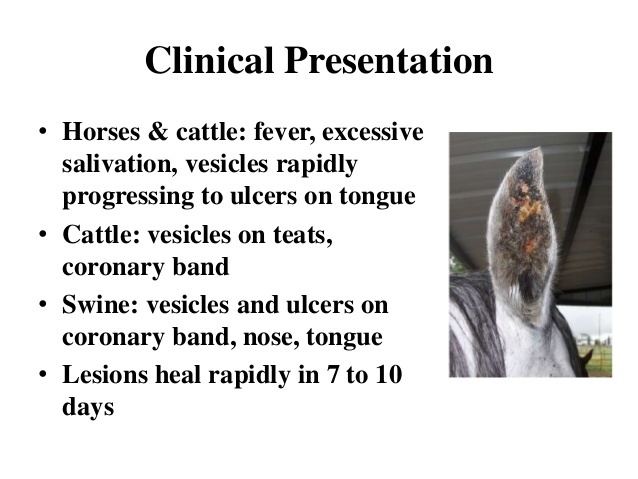
Vesicular stomatitis Indiana virus (VSIV) is the prototypic member of the genus Vesiculovirus of the family Rhabdoviridae. VSIV is an arbovirus, and its replication occurs in the cytoplasm. Natural VSIV infections encompass two steps, cytolytic infections of mammalian hosts and transmission by insects. In insects, infections are noncytolytic persistent. One confirmed vector of the virus is the phlebotomine sand fly Lutzomyia shannoni. The genome of VSIV is on a single molecule of negative-sense RNA that has 11,161 nucleotides in length, that encodes five major proteins: G protein (G), large protein (L), phosphoprotein, matrix protein (M) and nucleoprotein:
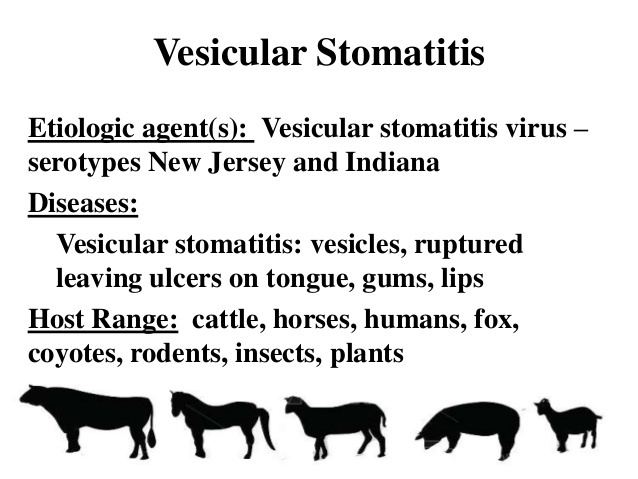
The VSIV G protein, aka VSVG, enables viral entry. It mediates viral attachment to an LDL receptor (LDLR) or an LDLR family member present on the host cell. Following binding the VSIV-LDLR complex is rapidly endocytosed It then mediates fusion of the viral envelope with the endosomal membrane. VSIV enters the cell through partially clathrin-coated vesicles; virus-containing vesicles contain more clathrin and clathrin adaptor than conventional vesicles. Virus-containing vesicles recruit components of the actin machinery for their interaction, thus inducing its own uptake. VSIV G does not follow the same path as most vesicles because transport of the G protein from the ER to the plasma membrane is interrupted by incubation at 15 °C. Under this condition, the molecules accumulate in both the ER and a subcellular vesicle fraction of low density called the lipid-rich vesicle fraction. The material in the lipid-rich vesicle fraction appears to be a post-ER intermediate in the transport process to the plasma membrane (PM). After infection, the VSIV G gene is expressed and is commonly studied as a model for N-linked glycosylation in the endoplasmic reticulum (ER). It is translated into the rough ER where the Glc3-Man9-GlcNac2 oligosaccharide is added by a dolichol-containing protein, to an NXS motif on VSIV G. Sugars are removed gradually as the protein travels to the Golgi apparatus, and it becomes resistant to endoglycosidase H. When synthesized in polarized epithelial cells, the envelope glycoprotein VSV G is targeted to the basolateral PM. VSVG is also a common coat protein for lentiviral vector expression systems used to introduce genetic material into in vitro systems or animal models, mainly because of its extremely broad tropism.
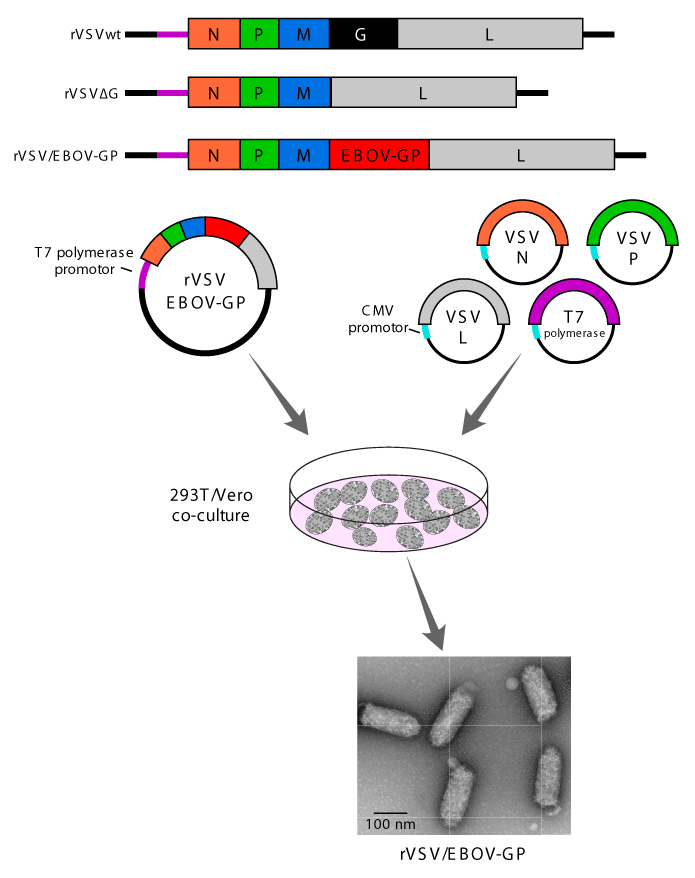
The VSIV L protein is encoded by half the genome, and combines with the phosphoprotein to catalyze replication of the mRNA.
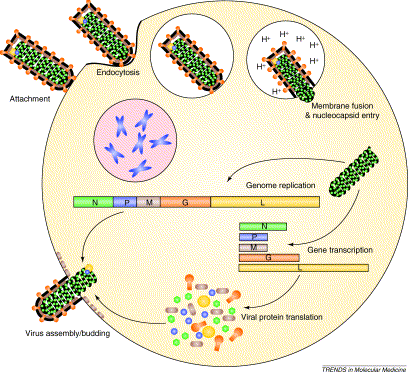
The VSIV M protein is encoded by an mRNA that is 831 nucleotides long and translates to a 229 amino acid-protein. The predicted M protein sequence does not contain any long hydrophobic or nonpolar domains that might promote membrane association. The protein is rich in basic amino acids and contains a highly basic amino terminal domain.
Clinical signs and diagnosis

The main sign in animals is oral disease appearing as mucosal vesicles and ulcers in the mouth, but also on the udder and around the coronary band. Animals may show systemic signs such as anorexia, lethargy and pyrexia. Disease usually resolves within two weeks, and animals usually recover completely.
Serological testing is most commonly performed with an ELISA or complement fixation, and viral isolation can also be attempted.
Treatment and control
No specific treatment is available, but some animals may require supportive fluids or antibiotics for secondary infections.
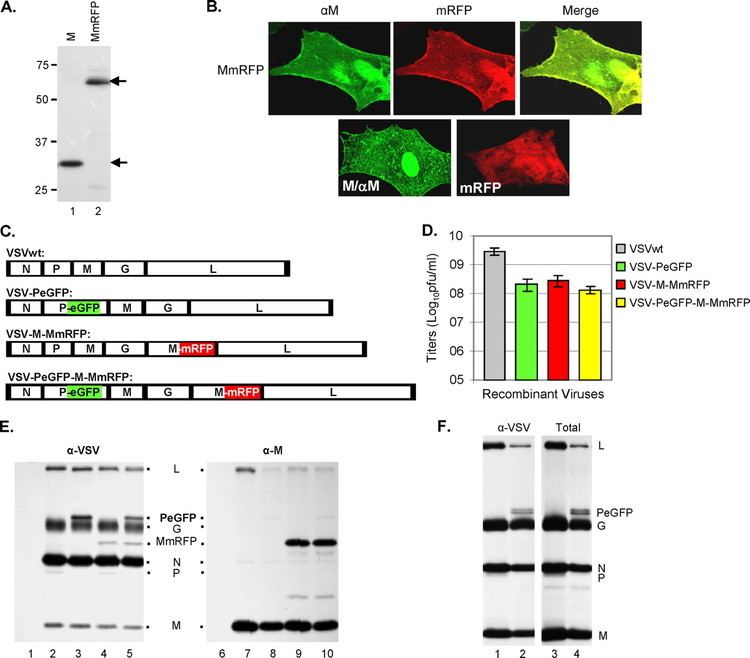
Control relies on biosecurity protocols, quarantine, isolation and disinfection to ensure the viral disease does not enter a country or herd.
Oncolytic therapy
In healthy human cells the virus cannot reproduce, probably because of the interferon response. Many cancer cells have a reduced interferon response, which probably allows VSIV to grow and hence lyse the oncogenic cells preferentially.
Recently, attenuated VSIV with a mutation in its M protein has been found to have oncolytic properties. Research is ongoing, and has shown VSIV to reduce tumor size and spread in melanoma, lung cancer, colon cancer and certain brain tumors in laboratory models of cancer.
Anti-HIV therapy
VSIV was modified to attack HIV-infected T-cells. The modified virus was called a "trojan horse" virus [1]
Therapies under development
Recombinant VSIV has undergone phase 1 trials as a vaccine for Ebola virus.
Recombinant VSIV expressing the Ebola virus glycoprotein has undergone phase III trials in Africa as a vaccine for Ebola virus disease. The vaccine was shown to be 76-100% effective in preventing Ebola virus disease.
Replication competent rVSV has also been created expressing proteins of Lassa fever and Marburg virus.
Other applications
The VSIV G protein is commonly used in biomedical research to pseudotype retroviral and lentiviral vectors, conveying the ability to transduce a broad range of mammalian cell types with genes of interest.
The VSIV G protein has also been used in cytological studies of trafficking in the endomembrane system. Immunoelectron microscopy suggests that VSIV G protein moves from cis to trans Golgi bodies without being transported between them in vesicles, supporting the cisternal maturation model of Golgi trafficking.
